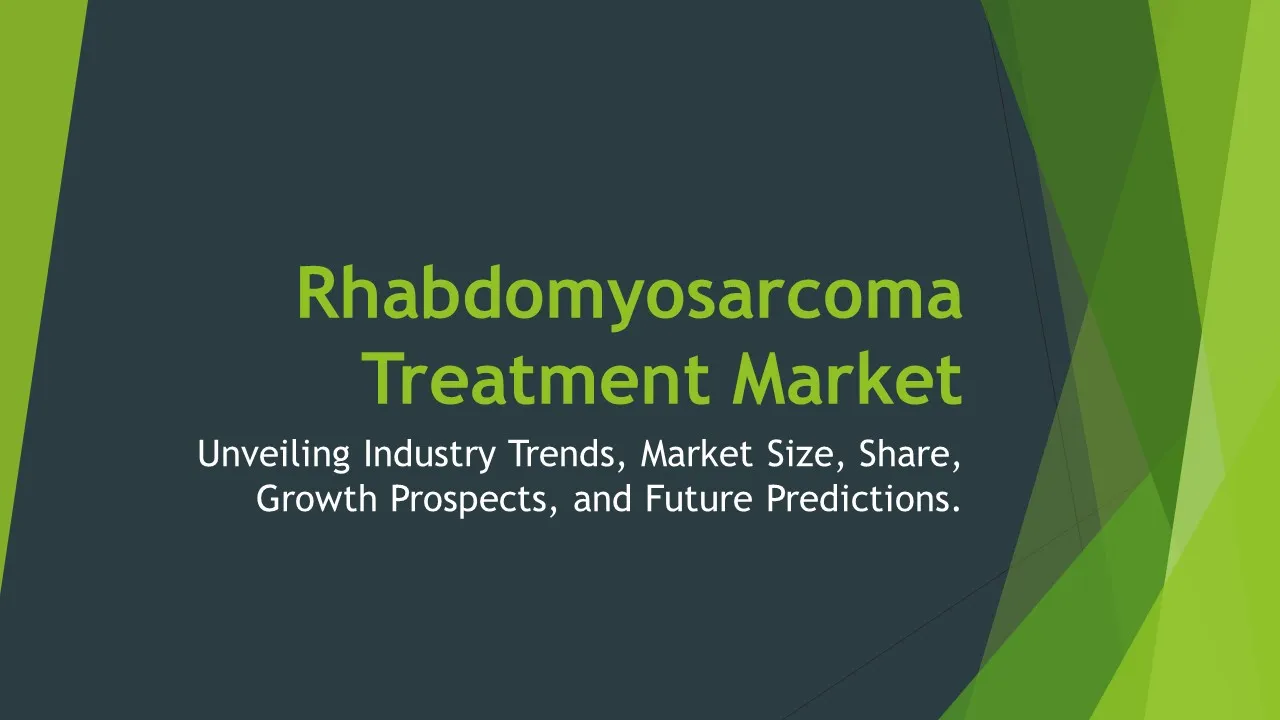Follicle Stimulating Hormone
Follicle Stimulating Hormone Market Segments - by Product Type (Recombinant FSH, Urinary FSH), Application (Infertility Treatment, Assisted Reproductive Technology), Distribution Channel (Hospitals, Fertility Clinics, Online Pharmacies), Ingredient Type (Human-derived FSH, Animal-derived FSH), and Region (North America, Europe, Asia Pacific, Latin America, Middle East & Africa) - Global Industry Analysis, Growth, Share, Size, Trends, and Forecast 2025-2035
- Report Preview
- Table Of Content
- Segments
- Methodology
Follicle Stimulating Hormone Market Outlook
The global Follicle Stimulating Hormone (FSH) market is poised for significant growth, projected to reach a market size of approximately USD 4 billion by 2035, with a robust compound annual growth rate (CAGR) of around 6.5% during the forecast period spanning 2025 to 2035. This growth can be attributed to rising incidences of infertility, increasing awareness and acceptance of assisted reproductive technologies (ART), and advancements in drug therapies enhancing treatment outcomes for patients. Moreover, the growing trend of delayed pregnancies and the rise in polycystic ovary syndrome (PCOS) cases have further catalyzed the demand for FSH treatments. Furthermore, innovations in FSH formulations and distribution channels are expected to contribute to market expansion, making effective treatments more accessible to a wider demographic. The surge in healthcare expenditure and the advancements in healthcare infrastructure are additional factors driving the market's growth.
Growth Factor of the Market
The growth of the Follicle Stimulating Hormone market is primarily driven by the increasing prevalence of infertility among couples globally. According to the World Health Organization (WHO), approximately 15% of couples experience infertility issues, highlighting the critical need for reliable and effective treatments. Additionally, there is a growing trend toward assisted reproductive technologies, such as in vitro fertilization (IVF), which necessitate the use of FSH to stimulate ovarian function. Furthermore, advancements in pharmaceutical formulations and the introduction of recombinant FSH have made treatments more efficient, thereby attracting a larger patient demographic. Another significant growth factor is the increasing investments in research and development by pharmaceutical companies, aimed at improving FSH products and exploring novel applications. The rising awareness of reproductive health, particularly among women, is also fostering a favorable environment for market growth, as more individuals seek medical assistance for fertility-related issues.
Key Highlights of the Market
- The FSH market is projected to grow at a CAGR of 6.5% from 2025 to 2035.
- Increased infertility rates globally are driving demand for FSH treatments.
- Recombinant FSH products are gaining popularity due to their efficacy and safety profile.
- Growth in assisted reproductive technology is a significant contributor to market expansion.
- Emerging markets in Asia Pacific and Latin America are anticipated to present lucrative opportunities for growth.
By Product Type
Recombinant FSH:
Recombinant FSH is a synthetic form of follicle-stimulating hormone that is produced through recombinant DNA technology. This product type has gained significant traction in the market due to its increased efficacy and lower risk of allergic reactions compared to urinary FSH. Recombinant FSH provides more consistent dosing and purity, making it a preferred choice among healthcare providers for fertility treatments. The heightened focus on personalized medicine also drives the growing demand for this product, as it allows for tailored treatment plans based on individual patient needs. As a result, the recombinant FSH segment is expected to witness substantial growth, reflecting a shift towards more modern and effective therapeutic solutions in reproductive health.
Urinary FSH:
Urinary FSH is derived from the urine of postmenopausal women and has been widely used in fertility treatments for decades. Despite the emergence of recombinant FSH, urinary FSH continues to hold a significant share of the market due to its established history and lower cost. Many patients and healthcare providers still prefer urinary FSH, particularly in regions where access to recombinant products is limited. However, the segment faces challenges related to variability in potency and potential side effects. Manufacturers are currently focusing on improving purification processes to enhance the quality of urinary FSH. The ongoing presence of this product type in the market ensures continued competition and can lead to price variations, which may impact overall market dynamics.
By Application
Infertility Treatment:
The infertility treatment application segment is one of the largest contributors to the Follicle Stimulating Hormone market. Increasing rates of infertility, driven by factors such as lifestyle changes, delayed marriages, and underlying health conditions like PCOS, have led to a growing demand for effective treatment options. FSH plays a crucial role in stimulating ovarian function, which is essential for both natural conception and assisted reproductive technologies. As more couples seek assistance in achieving pregnancy, the utilization of FSH will continue to rise. Furthermore, advancements in fertility treatment protocols, including personalized approaches, are expected to enhance the effectiveness of FSH, further solidifying its demand in this segment.
Assisted Reproductive Technology:
The assisted reproductive technology (ART) segment includes procedures such as in vitro fertilization (IVF) and intracytoplasmic sperm injection (ICSI), which rely heavily on the use of FSH to stimulate ovarian follicles. The growing acceptance and advancements in ART have led to an increase in the number of procedures performed globally. FSH is critical in these processes, as it helps in the growth and maturation of ovarian follicles, which are essential for successful egg retrieval and fertilization. The segment is expected to witness significant growth in the coming years, driven by technological advancements, rising awareness of ART options, and the increasing number of fertility clinics worldwide.
By Distribution Channel
Hospitals:
The hospital segment remains a primary distribution channel for Follicle Stimulating Hormone products. Hospitals provide comprehensive fertility treatment services, and the presence of trained specialists makes them a crucial link in the distribution chain. Patients often seek treatment in hospitals where they can receive a range of services, including diagnostics and various fertility treatments, all under one roof. As healthcare facilities continue to improve their reproductive health departments and expand their service offerings, the demand for FSH products within hospitals is expected to grow steadily. Moreover, the establishment of specialized fertility centers within hospitals enhances the overall patient experience by providing targeted and effective treatment plans.
Fertility Clinics:
Fertility clinics are increasingly becoming a vital distribution channel for FSH products, particularly in regions where specialized reproductive treatments are in high demand. These clinics focus exclusively on reproductive health, providing tailored treatment options and support for individuals and couples facing infertility issues. The personalized care provided at fertility clinics, coupled with advanced technologies and skilled practitioners, significantly boosts the effectiveness of FSH treatments. As more patients opt for fertility clinics to navigate their reproductive health journeys, this segment is expected to grow rapidly. Furthermore, the increasing number of fertility clinics globally creates a competitive landscape that encourages innovation and improved patient care.
Online Pharmacies:
The rise of e-commerce has transformed the distribution landscape for pharmaceutical products, including Follicle Stimulating Hormone. Online pharmacies offer a convenient and discreet way for patients to access fertility medications, catering to those who may feel uncomfortable purchasing such products in person. The expansion in digital health platforms and telemedicine is fueling the growth of online pharmacies, making it easier for patients to obtain prescriptions and have medications delivered directly to their homes. This segment is expected to grow, especially among younger, tech-savvy populations who prefer the convenience of online shopping. Additionally, the potential for competitive pricing and promotions through online channels may further drive the adoption of FSH products sold through these platforms.
By Ingredient Type
Human-derived FSH:
Human-derived FSH is obtained primarily from the urine of postmenopausal women and has been a longstanding treatment option for infertility. This ingredient type has a well-established efficacy profile and is widely recognized within the medical community. However, it carries certain limitations, including variability in hormone levels and potential allergic reactions in some patients. Despite these challenges, the demand for human-derived FSH remains strong, particularly among patients who may prefer traditional treatment options. Manufacturers are investing in improving purification processes to enhance the quality and consistency of human-derived FSH, which may help sustain its relevance in the market even as alternatives emerge.
Animal-derived FSH:
Animal-derived FSH is sourced from the pituitary glands of animals, predominantly sheep and cows. While this type of FSH has historically been used in veterinary medicine and some human treatments, its application is less common compared to human-derived and recombinant FSH due to ethical concerns and potential side effects. The market for animal-derived FSH is limited and primarily serves niche applications. However, ongoing research into the benefits of animal-derived hormones in specific therapeutic settings may provide opportunities for growth. Nevertheless, as the pharmaceutical industry increasingly shifts toward recombinant and human-derived options, the prominence of animal-derived FSH may continue to diminish.
By Region
The North American region leads the Follicle Stimulating Hormone market, accounting for a significant share, driven by high healthcare expenditure, advanced healthcare infrastructure, and a growing awareness of reproductive health issues. The United States, in particular, leads in the number of assisted reproductive technology procedures performed annually, contributing to the demand for FSH products. The market in North America is projected to grow at a CAGR of 6.8% during the forecast period, as increasing incidences of infertility and a rising number of fertility clinics enhance the accessibility of FSH treatments. Additionally, government initiatives promoting reproductive health and funding for fertility research play a pivotal role in bolstering market growth in this region.
In Europe, the FSH market is also experiencing growth, propelled by favorable healthcare policies and an increasing number of fertility specialists. Countries like Germany, France, and the United Kingdom are at the forefront of advancing reproductive health technologies, with a growing emphasis on ART. The European market for FSH is anticipated to exhibit a CAGR of 5.7% during the forecast period. The rising trend of delayed pregnancies among women and the increasing awareness of fertility issues are significant contributors to market growth in Europe. Furthermore, collaborations between healthcare providers and pharmaceutical companies to develop innovative treatment options will likely enhance the market's future prospects in this region.
Opportunities
One of the most promising opportunities in the Follicle Stimulating Hormone market lies in the increasing awareness and acceptance of assisted reproductive technology (ART). As societal norms surrounding fertility and family planning evolve, more individuals are seeking medical assistance for infertility issues. This shift in mindset is creating an expanding patient base that is more likely to utilize FSH as part of their treatment plans. Moreover, the growing emphasis on personalized medicine is prompting pharmaceutical companies to invest in research and development aimed at tailoring FSH therapies to individual patient needs. This focus on customization not only enhances patient outcomes but also fosters brand loyalty and drives long-term revenue growth for manufacturers.
Additionally, emerging markets in Asia Pacific and Latin America present lucrative growth opportunities for the Follicle Stimulating Hormone market. As these regions experience economic growth and improvements in healthcare infrastructure, access to fertility treatments is becoming more feasible for a larger population. The rising prevalence of infertility in these regions, coupled with an increase in disposable income, is likely to drive demand for FSH products. Furthermore, local manufacturers can capitalize on this trend by producing cost-effective FSH formulations tailored to regional preferences. By strategically positioning themselves in these markets, companies can harness new revenue streams and solidify their foothold in the evolving landscape of reproductive health.
Threats
Despite the positive growth prospects in the Follicle Stimulating Hormone market, several threats could hinder its progress. One of the primary concerns is the regulatory landscape governing fertility medications, which can vary substantially across different regions. Stringent regulations and lengthy approval processes can impede the swift introduction of new products, thereby limiting innovation and competitiveness in the market. Furthermore, the rise of counterfeit medications poses a significant threat to patient safety and the reputation of legitimate manufacturers. As counterfeit products infiltrate the market, they not only undermine consumer trust but also jeopardize the efficacy of legitimate FSH treatments. To mitigate these risks, companies must prioritize compliance with regulatory standards and invest in robust supply chain management to ensure product authenticity.
Another significant restraining factor in the FSH market is the high cost associated with fertility treatments, including the use of FSH products. Many patients face financial barriers when seeking infertility treatments, which can deter them from pursuing ART and related therapies. While insurance coverage for fertility treatments is improving, it remains inconsistent across different regions, leaving many patients to bear the financial burden themselves. As a result, the demand for FSH products may be constrained, particularly among lower-income populations. To address this issue, companies may need to explore pricing strategies that make treatments more accessible while maintaining profitability, or consider partnerships with insurance providers to improve coverage options for patients.
Competitor Outlook
- Merck KGaA
- Ferring Pharmaceuticals
- Gedeon Richter Plc
- IBSA Institut Biochimique SA
- Boehringer Ingelheim
- Novartis AG
- HLL Lifecare Limited
- OvaScience, Inc.
- Watson Pharmaceuticals
- Reproductive Health Specialists
- LG Chem
- Haplogen
- Pfizer Inc.
- Sandoz International GmbH
- Allergan
The competitive landscape of the Follicle Stimulating Hormone market is characterized by a diverse range of players, including multinational pharmaceutical companies and specialized biotech firms. The market is largely dominated by established companies such as Merck KGaA and Ferring Pharmaceuticals, which offer a wide array of FSH products backed by substantial research and development investments. These companies leverage their extensive distribution networks and brand recognition to maintain a competitive edge in the marketplace. Additionally, collaborations and partnerships among major players are becoming increasingly common, providing opportunities for innovation and expansion into new markets. With the ongoing advancements in FSH formulations, the competitive dynamics are expected to evolve, leading to greater competition and enhanced product offerings.
Moreover, emerging players are also entering the market, particularly from regions such as Asia Pacific and Latin America, where the demand for fertility treatments is on the rise. Companies like HLL Lifecare Limited and LG Chem are focusing on developing cost-effective FSH alternatives to cater to the growing patient population in these regions. This influx of new entrants is intensifying competition and prompting established players to innovate and adapt their strategies to maintain market share. Additionally, the rise of online pharmacies and telemedicine platforms is disrupting traditional distribution channels, allowing newer companies to reach consumers directly. As the market becomes more competitive, companies will need to prioritize product development, marketing strategies, and customer engagement to succeed in this dynamic landscape.
1 Appendix
- 1.1 List of Tables
- 1.2 List of Figures
2 Introduction
- 2.1 Market Definition
- 2.2 Scope of the Report
- 2.3 Study Assumptions
- 2.4 Base Currency & Forecast Periods
3 Market Dynamics
- 3.1 Market Growth Factors
- 3.2 Economic & Global Events
- 3.3 Innovation Trends
- 3.4 Supply Chain Analysis
4 Consumer Behavior
- 4.1 Market Trends
- 4.2 Pricing Analysis
- 4.3 Buyer Insights
5 Key Player Profiles
- 5.1 LG Chem
- 5.1.1 Business Overview
- 5.1.2 Products & Services
- 5.1.3 Financials
- 5.1.4 Recent Developments
- 5.1.5 SWOT Analysis
- 5.2 Allergan
- 5.2.1 Business Overview
- 5.2.2 Products & Services
- 5.2.3 Financials
- 5.2.4 Recent Developments
- 5.2.5 SWOT Analysis
- 5.3 Haplogen
- 5.3.1 Business Overview
- 5.3.2 Products & Services
- 5.3.3 Financials
- 5.3.4 Recent Developments
- 5.3.5 SWOT Analysis
- 5.4 Merck KGaA
- 5.4.1 Business Overview
- 5.4.2 Products & Services
- 5.4.3 Financials
- 5.4.4 Recent Developments
- 5.4.5 SWOT Analysis
- 5.5 Novartis AG
- 5.5.1 Business Overview
- 5.5.2 Products & Services
- 5.5.3 Financials
- 5.5.4 Recent Developments
- 5.5.5 SWOT Analysis
- 5.6 Pfizer Inc.
- 5.6.1 Business Overview
- 5.6.2 Products & Services
- 5.6.3 Financials
- 5.6.4 Recent Developments
- 5.6.5 SWOT Analysis
- 5.7 OvaScience, Inc.
- 5.7.1 Business Overview
- 5.7.2 Products & Services
- 5.7.3 Financials
- 5.7.4 Recent Developments
- 5.7.5 SWOT Analysis
- 5.8 Gedeon Richter Plc
- 5.8.1 Business Overview
- 5.8.2 Products & Services
- 5.8.3 Financials
- 5.8.4 Recent Developments
- 5.8.5 SWOT Analysis
- 5.9 Boehringer Ingelheim
- 5.9.1 Business Overview
- 5.9.2 Products & Services
- 5.9.3 Financials
- 5.9.4 Recent Developments
- 5.9.5 SWOT Analysis
- 5.10 HLL Lifecare Limited
- 5.10.1 Business Overview
- 5.10.2 Products & Services
- 5.10.3 Financials
- 5.10.4 Recent Developments
- 5.10.5 SWOT Analysis
- 5.11 Watson Pharmaceuticals
- 5.11.1 Business Overview
- 5.11.2 Products & Services
- 5.11.3 Financials
- 5.11.4 Recent Developments
- 5.11.5 SWOT Analysis
- 5.12 Ferring Pharmaceuticals
- 5.12.1 Business Overview
- 5.12.2 Products & Services
- 5.12.3 Financials
- 5.12.4 Recent Developments
- 5.12.5 SWOT Analysis
- 5.13 Sandoz International GmbH
- 5.13.1 Business Overview
- 5.13.2 Products & Services
- 5.13.3 Financials
- 5.13.4 Recent Developments
- 5.13.5 SWOT Analysis
- 5.14 IBSA Institut Biochimique SA
- 5.14.1 Business Overview
- 5.14.2 Products & Services
- 5.14.3 Financials
- 5.14.4 Recent Developments
- 5.14.5 SWOT Analysis
- 5.15 Reproductive Health Specialists
- 5.15.1 Business Overview
- 5.15.2 Products & Services
- 5.15.3 Financials
- 5.15.4 Recent Developments
- 5.15.5 SWOT Analysis
- 5.1 LG Chem
6 Market Segmentation
- 6.1 Follicle Stimulating Hormone Market, By Application
- 6.1.1 Infertility Treatment
- 6.1.2 Assisted Reproductive Technology
- 6.2 Follicle Stimulating Hormone Market, By Product Type
- 6.2.1 Recombinant FSH
- 6.2.2 Urinary FSH
- 6.3 Follicle Stimulating Hormone Market, By Ingredient Type
- 6.3.1 Human-derived FSH
- 6.3.2 Animal-derived FSH
- 6.4 Follicle Stimulating Hormone Market, By Distribution Channel
- 6.4.1 Hospitals
- 6.4.2 Fertility Clinics
- 6.4.3 Online Pharmacies
- 6.1 Follicle Stimulating Hormone Market, By Application
7 Competitive Analysis
- 7.1 Key Player Comparison
- 7.2 Market Share Analysis
- 7.3 Investment Trends
- 7.4 SWOT Analysis
8 Research Methodology
- 8.1 Analysis Design
- 8.2 Research Phases
- 8.3 Study Timeline
9 Future Market Outlook
- 9.1 Growth Forecast
- 9.2 Market Evolution
10 Geographical Overview
- 10.1 Europe - Market Analysis
- 10.1.1 By Country
- 10.1.1.1 UK
- 10.1.1.2 France
- 10.1.1.3 Germany
- 10.1.1.4 Spain
- 10.1.1.5 Italy
- 10.1.1 By Country
- 10.2 Asia Pacific - Market Analysis
- 10.2.1 By Country
- 10.2.1.1 India
- 10.2.1.2 China
- 10.2.1.3 Japan
- 10.2.1.4 South Korea
- 10.2.1 By Country
- 10.3 Latin America - Market Analysis
- 10.3.1 By Country
- 10.3.1.1 Brazil
- 10.3.1.2 Argentina
- 10.3.1.3 Mexico
- 10.3.1 By Country
- 10.4 North America - Market Analysis
- 10.4.1 By Country
- 10.4.1.1 USA
- 10.4.1.2 Canada
- 10.4.1 By Country
- 10.5 Middle East & Africa - Market Analysis
- 10.5.1 By Country
- 10.5.1.1 Middle East
- 10.5.1.2 Africa
- 10.5.1 By Country
- 10.6 Follicle Stimulating Hormone Market by Region
- 10.1 Europe - Market Analysis
11 Global Economic Factors
- 11.1 Inflation Impact
- 11.2 Trade Policies
12 Technology & Innovation
- 12.1 Emerging Technologies
- 12.2 AI & Digital Trends
- 12.3 Patent Research
13 Investment & Market Growth
- 13.1 Funding Trends
- 13.2 Future Market Projections
14 Market Overview & Key Insights
- 14.1 Executive Summary
- 14.2 Key Trends
- 14.3 Market Challenges
- 14.4 Regulatory Landscape
Segments Analyzed in the Report
The global Follicle Stimulating Hormone market is categorized based on
By Product Type
- Recombinant FSH
- Urinary FSH
By Application
- Infertility Treatment
- Assisted Reproductive Technology
By Distribution Channel
- Hospitals
- Fertility Clinics
- Online Pharmacies
By Ingredient Type
- Human-derived FSH
- Animal-derived FSH
By Region
- North America
- Europe
- Asia Pacific
- Latin America
- Middle East & Africa
Key Players
- Merck KGaA
- Ferring Pharmaceuticals
- Gedeon Richter Plc
- IBSA Institut Biochimique SA
- Boehringer Ingelheim
- Novartis AG
- HLL Lifecare Limited
- OvaScience, Inc.
- Watson Pharmaceuticals
- Reproductive Health Specialists
- LG Chem
- Haplogen
- Pfizer Inc.
- Sandoz International GmbH
- Allergan
- Publish Date : Jan 21 ,2025
- Report ID : PH-65776
- No. Of Pages : 100
- Format : |
- Ratings : 4.5 (110 Reviews)









